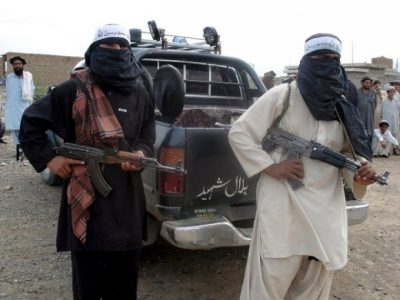
Islamic State terrorist group is seeking to exploit divisions within the Taliban
The attack against Kabul’s airport reminded the world that the Islamic State Khorasan Province (ISKP) remains active in Afghanistan and has not signed any peace deals. The US retaliated with two controversial drone strikes. After these episodes, ISKP may appear to be the most serious challenge to the Taliban right now, but the Taliban’s internal rivalries make it, in many ways, its own worst enemy.
The Taliban may appear powerful, with about 85,000 mobilised fighters, but they are also stretched thin all over Afghanistan, with a large part of their strength committed to securing the cities. This is 10 times the number of fighters who are loyal to ISKP, and maybe 20 times as big as the handful of loosely organised “resistance” militias based in the north-eastern province of Panjshir, who claim to be the main opposition to Taliban rule.
But numbers do not tell the whole story. The Taliban have weaknesses that their enemies are seeking to exploit – and the group is showing a distinct lack of effective leadership, with rival leaders split into northern, eastern and southern factions pulling it in different directions.
Taliban fighters are supported by various Pakistani groups, such as the Pakistani Taliban (TTP), Lashkar-e-Taiba and Lashkar-e-Jhangvi, although it is likely that the last two will be pulled back into Pakistan. The Taliban can also count on the support of various groups linked to al-Qaida and the Islamic Movement of Uzbekistan, plus other tiny groups, totalling perhaps 20,000 foreign fighters. The loyalty of the foreign jihadists to the southern leadership of the Taliban is rather suspect, as they tend to be closer to the eastern and northern factions.
ISKP is the branch of the Islamic State in Afghanistan and in the tribal areas of Pakistan. It is funded primarily by the leadership of the “caliphate” and its fighting strength in the country is in the range of 5,000 men. By keeping a low profile and focusing on asymmetric tactics, ISKP has been recovering some strength in recent months.
And numbers may have been boosted by the release of hundreds of ISKP detainees when the Taliban opened up the prisons in mid-August. Some foreign jihadist groups have close relations to ISKP and might side with it, depending on the circumstances. This is particularly the case of Imam Bukhari Jamaat, which has several hundred fighters from Central Asia, and some smaller groups of Uyghur and of North Caucasus jihadists.
For ISKP, the only possibility of strategic success is splitting the Taliban into rival factions, hoping that one of these factions will then ally with them. ISKP is fully aware of the extent of the current tensions between the Taliban’s leadership in the south and the Taliban networks in the north and in the east. It hopes to drive a wedge between the southern and the eastern Taliban in particular, but it has also relations with the north-eastern Taliban.
The main problem facing the Taliban leadership is they don’t have the majority of the manpower, only about 40-45% of their 85,000 number. Sirajuddin Haqqani, the leader of the Haqqani network and deputy of the Quetta Shura, leads the eastern “lobby” and represents around 30-35% of the forces, including some of the north-eastern Taliban, while the northern (Uzbek and Tajik) Taliban account for about 25%.
The ISKP calculus is therefore to make the contradictions between the southern and eastern Taliban explode. Tension was already high, as the proposed cabinet list, completely dominated by southerners, enraged the easterners and northerners. The airport attack only exacerbated the dispute, as the eastern Taliban entered the capital first, creating grievances with the southern leadership who wished to appear in charge of the situation.
Because of the past record of Haqqani collaboration with ISKP, the southern Taliban will now be suspecting the Haqqanis of being involved in the attack. The eastern Taliban threaten to “join ISKP” if their grievances are not addressed, while the southerners respond that “the real Taliban are the southern ones”. The Taliban will indeed need some statesmanship to keep the whole show from unravelling ingloriously fast.
Source: The Guardian





